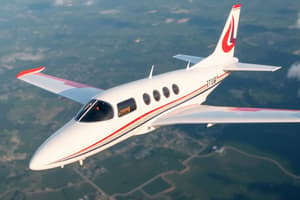Podcast
Questions and Answers
Some snakes in Asia can jump from tree to tree without flying.
Some snakes in Asia can jump from tree to tree without flying.
False (B)
The flying snakes can achieve speeds of approximately 24 metres per second.
The flying snakes can achieve speeds of approximately 24 metres per second.
True (A)
Scientists use digital cameras to study the flying motions of the snakes.
Scientists use digital cameras to study the flying motions of the snakes.
True (A)
The S-shaped body position helps the snakes fly effectively.
The S-shaped body position helps the snakes fly effectively.
Flying snakes prefer to dwell in areas with short trees.
Flying snakes prefer to dwell in areas with short trees.
Flashcards are hidden until you start studying
Study Notes
Flying Snakes in Asia
- Certain species of snakes in Asia have the ability to glide or "fly" between trees.
- This adaptation allows snakes to navigate their arboreal habitat more efficiently.
- Instead of climbing down a tree and ascending another, they can jump and glide to the next tree.
Mechanics of Flight
- Flying snakes can glide at speeds of approximately 24 meters per second.
- They achieve this gliding motion by forming their bodies into an S-shape.
- The unique shape and movement enable them to control their descent and direction while airborne.
Scientific Discovery
- Understanding the flying capability of snakes was enhanced through slow-motion digital video technology.
- Scientists utilized slow-motion filming to observe and analyze the snakes' movements in detail.
Studying That Suits You
Use AI to generate personalized quizzes and flashcards to suit your learning preferences.




